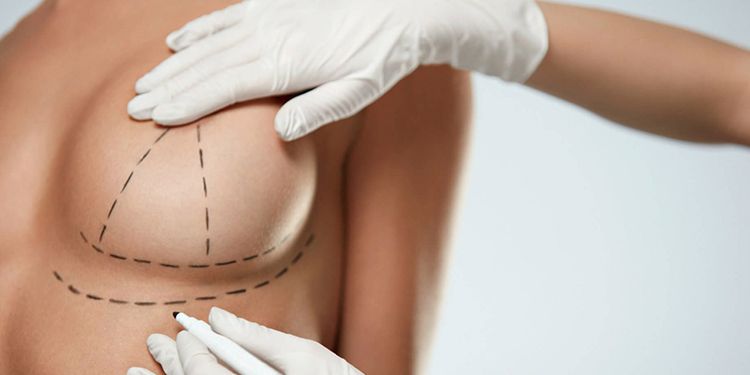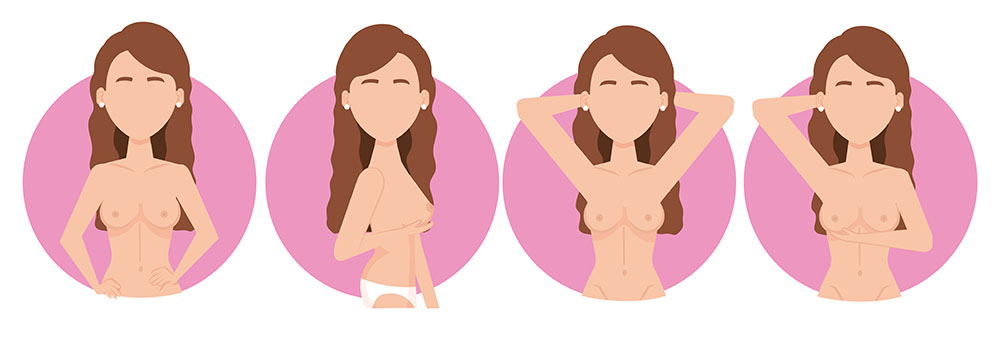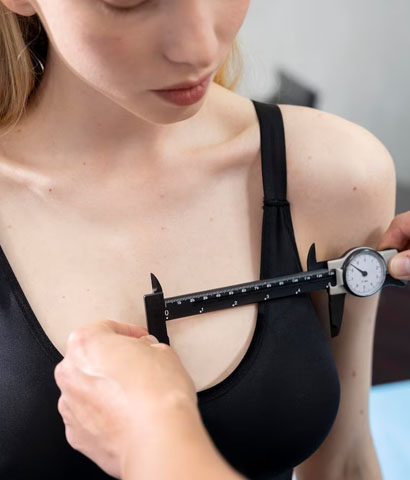
A breast lift, also known as a mastopexy, is a cosmetic surgical procedure designed to raise and reshape sagging breasts by removing excess skin and tightening the surrounding tissue. Breast lifts do not significantly change the size of the breasts but can restore a more youthful and perky appearance. There are several types of breast lift techniques, each addressing different degrees of breast sagging (ptosis) and resulting in different scar patterns:
Crescent Lift: This technique involves a small, crescent-shaped incision along the upper half of the areola. It is suitable for patients with minimal sagging and is often combined with breast augmentation. The crescent lift results in minimal scarring that is concealed along the border of the areola.
Peri-areolar Lift (Donut Lift): This technique is used for patients with mild to moderate sagging. The incision is made around the entire circumference of the areola, allowing the surgeon to remove excess skin and reshape the breast tissue. The peri-areolar lift results in scarring that is well-concealed along the border of the areola and is often combined with breast augmentation or reduction.
Vertical Lift (Lollipop Lift): This technique is suitable for patients with moderate to severe sagging. It involves two incisions: one around the areola and another vertically from the bottom of the areola to the inframammary fold (the crease beneath the breast). This approach allows for more extensive removal of excess skin and reshaping of the breast tissue. The vertical lift results in a lollipop-shaped scar pattern.
Inverted-T Lift (Anchor Lift): This technique is used for patients with significant sagging or those who have undergone massive weight loss. It involves three incisions: one around the areola, another vertically from the bottom of the areola to the inframammary fold, and a third along the inframammary fold. This approach allows for the most extensive removal of excess skin and reshaping of the breast tissue. The inverted-T lift results in an anchor-shaped scar pattern.
Auto-augmentation Breast Lift: This technique involves rearranging and using the patient’s breast tissue to provide additional volume and lift, without the need for breast implants. It can be combined with any of the previously mentioned breast lift techniques, depending on the degree of sagging and the patient’s goals.
The choice of breast lift technique depends on factors such as the degree of breast sagging, the size and shape of the breasts, the patient’s goals, and the surgeon’s preferences. It is essential to consult with a board-certified plastic surgeon to determine the most suitable breast lift technique for your individual needs and goals.

Breast Lift Tech
A breast lift, or mastopexy, is a surgical procedure that raises and reshapes sagging breasts by removing excess skin and tightening the surrounding tissue. This procedure can also reduce the size of the areola if necessary. There are several types of breast lift techniques that vary based on the incision pattern, degree of sagging, and desired outcome. The most common breast lift techniques include:
Crescent lift: This technique involves a small, crescent-shaped incision along the upper half of the areola. It is suitable for women with minimal sagging who require a slight lift. The crescent lift is the least invasive of all breast lift techniques and leaves minimal scarring.
Peri-areolar lift (Donut lift): In this technique, a circular incision is made around the edge of the areola. This approach is suitable for women with mild to moderate sagging and can also be used for areola reduction. The peri-areolar lift results in a single, well-concealed scar around the areola.
Vertical lift (Lollipop lift): This technique involves two incisions – one around the edge of the areola and another vertically from the areola’s lower edge to the breast crease. The vertical lift is suitable for women with moderate sagging and provides more significant reshaping compared to the crescent and peri-areolar lifts. The lollipop lift results in a scar around the areola and a vertical scar from the areola to the breast crease.
Inverted-T lift (Anchor lift): This technique involves three incisions – one around the areola, another vertically from the areola to the breast crease, and a third along the breast crease. The inverted-T lift is ideal for women with severe sagging and excess skin, providing the most dramatic lift and reshaping. This technique results in scars around the areola, vertically from the areola to the breast crease, and along the breast crease.
The choice of breast lift technique depends on the patient’s goals, degree of sagging, and the surgeon’s recommendations. In some cases, a breast lift may be combined with breast augmentation using implants or fat transfer to achieve the desired size, shape, and fullness. It is essential to consult with a qualified plastic surgeon to determine the most appropriate breast lift technique for your unique needs and expectations
Breast Lift Frequently Asked Questions
A breast lift is a surgical procedure that lifts and reshapes sagging breasts. It can also reposition the nipples and areolas to a more youthful and aesthetically pleasing position.
Good candidates for a breast lift are women who have sagging breasts due to aging, weight loss, pregnancy, or genetics. They should be in good overall health, have realistic expectations, and be non-smokers.
A breast lift is typically performed under general anesthesia and involves making incisions around the areola, down the front of the breast, and sometimes horizontally along the breast crease. The surgeon will then remove excess skin and reshape the breast tissue before repositioning the nipple and areola.
The recovery time for a breast lift varies depending on the individual and the extent of the surgery. Generally, patients can expect to take a week or two off work and avoid strenuous activities for several weeks. A supportive bra should be worn for several weeks following the procedure.
Yes, a breast lift will leave scars, but they will typically fade over time and become less noticeable. The extent and location of the scars will depend on the type of breast lift performed and the individual’s healing process.
Yes, a breast lift can be combined with other procedures such as breast augmentation or reduction, depending on the patient’s goals and individual circumstances.
As with any surgery, there are potential risks and complications associated with a breast lift, such as bleeding, infection, changes in nipple sensation, scarring, and asymmetry. It’s important to discuss these risks with your surgeon and follow all pre- and post-operative instructions to minimize the risk of complications.
The results of a breast lift are long-lasting, but they are not permanent. Factors such as aging, weight fluctuations, and pregnancy can all impact the appearance of the breasts over time.




